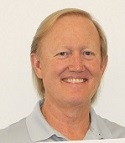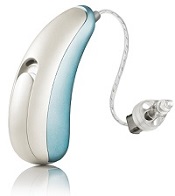New Products and Practice Development Opportunities from Unitron
Carolyn Smaka: Steve and Jason, thanks for your time today. Can you provide an overview of the new Pro premium technology level?

Jason Mayer: Thanks for the opportunity to share our excitement about these new solutions.
Pro is the new premium technology level for our Moxi2 and Quantum2 product families. Built on the Era™ platform, Pro creates an ultimate listening experience without compromise, and delivers a number of industry leading enhancements like SpeechZone™ 2.
The new SpeechZone 2 feature, made possible by binaural spatial processing, which enables it to locate speech within 360 degrees. It quickly determines if speech is coming from the front, back, left or right side of the listener and automatically selects a binaural or asymmetric synchronized microphone strategy to ensure the best possible speech understanding in noise. In addition, Pro includes SmartFocus™ 2, and a sophisticated four destination Automatic Program, for seamless, ease of listening in all environments.
Professionals tell us that they want to have as many tools in their toolbox as possible to meet the needs of their patients. Premium technology needs to deliver the best performance, automatically. For example, we are currently sitting around a conference table in a noisy convention center. If I were wearing hearing instruments with a typical microphone strategy in this situation, they would detect the noise, and focus the directional microphones in front of me. Since we’re sitting at a round table and you’re sitting next to me, I’d need to turn to the side and face you for maximum benefit. That’s a bit unnatural and distracting. Some manufacturers have come up with solutions where with manual intervention, the microphones will adapt and maybe track the left sided speech or right sided speech and send it to the other ear, but we do not believe that manual intervention is what people are looking for when they choose premium products. With this next generation of Pro, as soon as you start speaking, the hearing aid in my ear closest to you will automatically go to omnidirectional mode so I can still hear you, while the other will stay directional to minimize distraction from surrounding noise.
Carolyn: You mentioned 360 degree speech detection. Can you go into more detail?
Jason: Sure. Consider we are talking in a coffee shop or a restaurant, and the waiter comes up behind me and asks if I am ready to order. My hearing instruments would detect the waiter’s voice, and engage an omnidirectional mode so I can hear the speech from behind me without sacrificing speech coming from the front.
I was having dinner with a colleague last week who wears older hearing instruments. I sat right next to him and it struck me how he was struggling to hear me. At times, I would need to get his attention so that he would turn and face me so that his hearing aid microphones were aiming at me. I can’t wait for him to try the new Pro technology with 360 degree speech detection.
Carolyn: I had this same experience on an airplane. I sat next to someone with hearing aids, and every time I spoke, the person would have to turn her head all the way to the side and then ask me to repeat. Have you beta trialed this technology, or otherwise had feedback from professionals?

Steve Savage: Absolutely. As with all our new products we conduct very thorough field trials with patients and hearing healthcare professionals. The feedback we received from the participants trialing our next generation Pro was very positive. Our participants reported how clear and natural their Pro hearing aids sound and gave us some of the highest clarity ratings in noise that we have ever obtained. The quality of sound is fantastic, as professionals who completed the listening demo in our booth as AudiologyNOW! in Orlando will tell you, and SpeechZone 2 is truly a breakthrough technology.
Carolyn: With the economy the way that it is, is there really a market for premium products today?
Jason: Industry data show that between 10% and 12% of the market have premium solutions. The challenge for clinicians is to demonstrate the benefit of premium technology. That is why we think Flex is a wonderful opportunity.
Steve: The exciting part about Flex is that the clients get to take the devices, with the technology level the HHCP recommends, to try at home with no obligation. They get to experience better hearing in their daily lives, and this is very powerful. It is unique and can help to take the price out of the conversation.
Jason: Flex also provides clinicians with a way to differentiate themselves from some of the more aggressive retailers. We believe that this business is personal, and by enhancing the personal connections between our clinicians and their clients, that they can create a more loyal and dedicated fan base, instead of a database.
Everyone has been talking about open platform technology, but we are the only company that actually gives the clinician the power to adjust technology levels with instruments in their office. You can demonstrate the right level of technology and deliver great service to your clients.
Steve: If you look at the different interactions that a clinician might have with a client, there are many areas where they can deliver a “wow” effect, rather than just meeting expectations. For example, if someone wants to have a demonstration of technology, it is usually not a problem when it comes to premium technology. However, if premium technology is not in the budget, clinicians are stuck with having to demo premium technology and explain to the person that this is not really what they will get. It’s awkward.
With Flex, they can “wow” the patient by providing a real demonstration of the technology that is recommended for the patient.
Jason: Another example of how Flex can create a “wow” experience is when a client has hearing instruments in need of repair. Typically, while hearing instruments are being repaired, the client either goes without amplification, or maybe they are given some old loaner BTEs. We think there is a great opportunity here to follow the car industry. When I take my car in for a service, they do not give me an old clunker; they give me a slightly better and newer model of the car that I am already driving. This is about great customer service, and it also creates more loyalty and maybe a future purchase.
Originally we envisioned that Flex was for the people who are candidates for hearing instruments but say, “Let me think about it.” What happens to those people? We either try to get them to make a purchasing decision, which they may not be ready for, or we say “Go home and think about it” and we add them to our database to follow with later.
With Flex, you can let the person go home think about it, while wearing exactly the technology you have recommended. We know that 80% of the people that try amplification are delighted by it. And these are just a few of the use cases for Flex. The offices that are using Flex are finding new opportunities all the time.
Carolyn: You mentioned how Flex can help clinicians differentiate themselves. What other tools or resources does Unitron provide hearing care practices?
Jason: We have a practice development team headed by Dr. Brian Taylor. Brian draws on best practices from our industry and related industries, and has practical solutions for businesses trying to reposition themselves in this age of information where consumers are seeking the best deal. That is just the reality of consumers today. Practices are asking themselves if they should try and compete on price, but that is a losing battle as someone can always undercut you. Should you try to find a great product that no one else sells? That also is not going to work, because products are available in all sorts of channels these days, and there are always new products coming out. We really want to help clinicians understand that their value is themselves. It is the individual service they provide, and who they are that will ultimately attract and maintain customers. The risk is talking about this in a glib fashion as if it is an easy task, but it is not. To reposition your brand as an independent business is not a quick fix. It is a deliberate and almost obsessive path that you need to take. It can take up to two years. We have the expertise with Brian and with our marketing and practice development team, and we can help people through that journey to help them be successful.
Carolyn: That is a great point. Before we conclude, I wanted to congratulate you on the recent design awards for Moxi Kiss.

Unitron Moxi Kiss.
Steve: Thank you. We are very proud that Moxi Kiss has won the iF Product Design Award and most recently the prestigious Red Dot award. Moxi Kiss is really the first hearing instrument to come from a new evolution in design from Unitron. One that is focused on putting patient comfort at the forefront. Our head of product development, Ara Talaslian describes it best with his own version of Maslow’s hierarchy of needs, in terms of what is needed for hearing instrument satisfaction. First, you have to meet basic needs at the foundation, before you can move up the hierarchy. One of those basic needs is psychological comfort of the wearer, or being ok with wearing a device at all. As a result, reducing stigma by designing very attractive hearing instruments is a challenge that Unitron has tackled head on. These recent awards have marked the progress that we have made.
Carolyn: Jason and Steve, thanks again for the update.
For more information, please visit www.unitron.com or the Unitron Expo Page on AudiologyOnline. For continuing education and training courses on the next generation of Unitron’s premium technology, Quantum² Pro and Moxi² Pro, visit the Unitron course library on AudiologyOnline.

